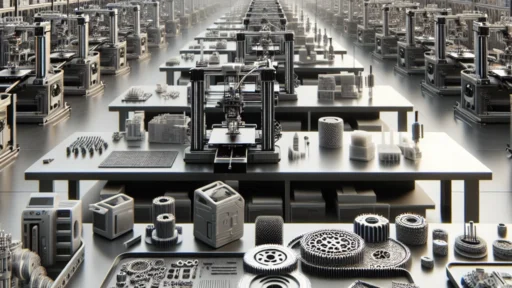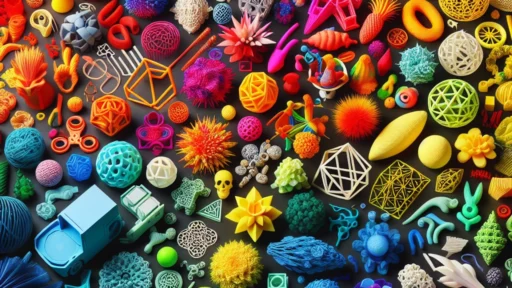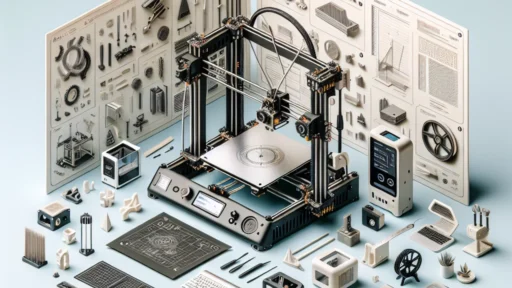3D Printing for Beginners: Common Misconceptions Debunked
If you’re a newcomer to the world of 3D printing, you might have heard a lot of hype surrounding this fascinating technology. From creating complex designs to producing practical items right at home, the potential seems practically limitless! However, with all the excitement come some misconceptions that can cloud your understanding. Let’s clear the air and explore the common myths surrounding 3D printing, so you can dive into your new hobby—or perhaps future career—without any confusion.
Misconception 1: 3D Printing is Too Complicated for Beginners
Many people assume that 3D printing is only for tech wizards or engineering experts. This couldn’t be further from the truth! While it’s true that some aspects of 3D printing can get pretty technical, there are numerous user-friendly options available for beginners. Today’s 3D printers often come with straightforward setups, and thanks to advancements in design software, users can easily create or modify existing models without needing an engineering degree.
Platforms like Thingiverse and Tinkercad allow you to access thousands of ready-made designs. Whether you’re looking to print a simple toy or a custom phone holder, you can find resources that suit your needs. So, don’t let the perceived complexity intimidate you; everyone’s a beginner at some point!
Misconception 2: 3D Printing is Incredibly Expensive
When considering how to start 3D printing, many potential newcomers shy away thinking that it will break the bank. While there are certainly high-end models that can cost thousands of dollars, there are also plenty of budget-friendly options available. You can find good-quality entry-level printers for as low as a few hundred bucks! Plus, consider the savings you might gain over time by printing your own items instead of buying them.
Additionally, filament prices have become more competitive, meaning you won’t have to spend a fortune to keep your printer stocked. As you get more comfortable with the technology, it may even make sense to invest in a higher-quality printer that can produce more complex projects. The initial investment isn’t as daunting as it seems when you realize the potential savings in creativity and practicality!
Misconception 3: 3D Printing is Only for Industrial Use
Although 3D printing has certainly revolutionized manufacturing and industrial processes, it’s not just for the big leagues. The power of 3D printing is accessible to anyone—hobbyists, educators, artists, and inventors alike. Many schools are adopting 3D printing in classrooms, allowing students to explore their creativity in hands-on ways that traditional methods can’t provide.
In fact, some of the most exciting innovations come from everyday people turning their ideas into reality. You could develop a new kitchen gadget or a custom piece of jewelry that no one has seen before. The community around 3D printing is vibrant and filled with enthusiasts who share projects, ideas, and knowledge. There are countless online forums and groups where you can learn and collaborate—an opportunity that thrives in the hands of regular individuals.
Misconception 4: 3D Printed Items Are Low Quality
You’ve probably seen some visuals of poorly printed objects or heard anecdotes about fragility. This leads many to believe that 3D-printed items are inherently low-quality. In reality, the quality of a 3D print largely depends on the printer, the materials used, and the skills of the operator.
With the right equipment and some practice, you can create sturdy, high-quality items that rival traditional manufacturing methods. Products like 3D-printed prosthetics, automotive parts, and even structures in construction are all testament to the potential quality achievable through this technology. As you learn the ins and outs, you’ll develop a better understanding of how to optimize your prints for durability and aesthetic appeal.
Misconception 5: You Can Print Anything and Everything
The idea of printing anything and everything is certainly appealing, but it’s important to recognize that not all designs are suitable for 3D printing. Some items are too complex, while others require materials or capabilities that many home printers simply don’t offer. A realistic expectation is essential when starting your 3D printing journey.
Focus first on simpler designs to grasp how the process works, and gradually challenge yourself with more complex projects. As you gain experience, you can explore more intricate designs and understand the limitations and strengths of your specific printer model.
As you can see, 3D printing is an exciting and accessible hobby brimming with possibilities. By debunking these common misconceptions, you’re better equipped to step into this ever-evolving world with clarity and confidence. Whether you’re aiming to create practical solutions for daily life or indulge in artistic expressions, the adventure of 3D printing awaits you. Embrace the learning curve, share your experiences, and who knows? You might inspire the next wave of creators!






